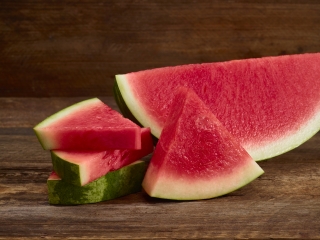
Fresh Ingredients Make Delicious and Nutritious Dishes
07 January 2016Fresh and nutritious fruit is available year round thanks to global transportation. Educators are teaching that seasons don’t dictate what’s in season.
By Lisa Parrish, GMC Editor
The health spotlight never shines as brightly as it does in January.This news is great considering one third of all adults are obese, according to the Center for Disease Control and Prevention. It’s the beginning of a new month and year. People are climbing on the healthy bandwagon right now. This is great news considering one third of all adults in the United States are obese, according to the Center for Disease Control and Prevention.
On this healthy month-long joy ride people are tending toward consuming nutrient-dense food that contribute to an overall healthy diet and have the added benefit of disease protection.
So, why does January have to be the only month for healthy eating? It doesn’t! Educators know the benefits of good foods prepared with fresh nutritious ingredients can be enjoyed year round. And, instructing students about how to cook foods with nutritious ingredients doesn’t have to be controlled by the calendar either.

Fruits are plentiful all year thanks to imports that come to the United States with safe handling practices. For instance, mangos, which originally hailed from Florida and require a tropical growing environment, are imported from countries like Mexico, Ecuador, Peru, Brazil, Guatemala and Haiti. Watermelon, considered a summer staple, is available now from Dominican Republic, Honduras, Mexico and Guatemala.
Eating fruit is a good source of vitamins, minerals and fiber. The government’s dietary guidelines suggest adult males and females eat 1 ½ to two cups of fruit a day. Another benefit of eating a fruit-rich diet is that it may reduce risk for stroke, other cardiovascular diseases and type-2 diabetes.
Commercially speaking, Americans are beginning to take more notice of healthy fruits and looking for them on menus across the country. According to the Watermelon Board, watermelon is one of the fastest growing fruits on salad menus with its penetration increasing 50% from 2010 to 2014. It was also mentioned in 8.4% of 7,000 commercial American restaurants scanned by Datassential MenuTrends Research firm.
Another popular fruit being served in restaurants is mangos. In a 2013 Datassential MenuTrends Research survey of 4,800 commercial restaurants, the firm found mangos are the 9th most common fruit on menus and the 6th fastest growing fruit.
The commercial demand for fruits is growing and the supply side is keeping up. The natural growing cycle of watermelons in the United States is April through November. During the off months, watermelons are imported from countries in Central and South America who have a complimentary growing cycle to the US. It is similar with mangos; only Florida, California, Hawaii, and Puerto Rico grow the fruit, however most of the mangos eaten in the US come from Central and South America.
Culinary students are taught cooking with fresh ingredients improves a dish’s flavor. Including fresh fruit information in more culinary courses will help students fully understand fruit’s nutritious and delicious benefits. Current curriculums are including these study areas: product selection and purchasing, preparation, storage and handling.
So, as people jump on and off the health bandwagon this year, educators should be ready to instruct students how to support healthy lifestyles with nutritious and delicious foods that are not dictated by the month showing on the calendar.
For more information about mangos, visit www.mango.org.
Click here for a video link that is a quick reference for selection, storage and preparation of the delicious and nutritious fruit, watermelon. For more information about watermelon, visit the Watermelon Board at www.watermelon.org.
